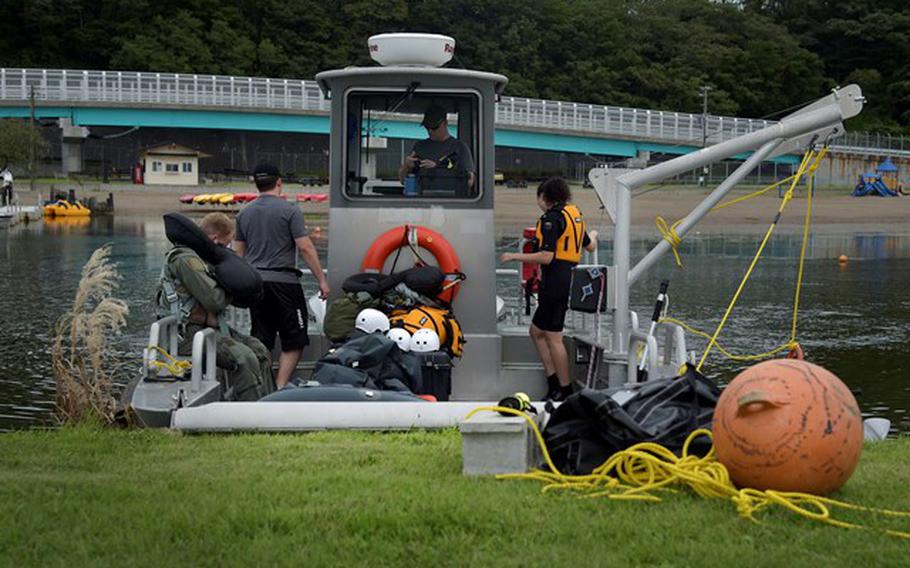Community News
Pilots plunge into SERE water survival course
Misawa Air Base October 1, 2016

()
MISAWA AIR BASE, Japan -- Flying sorties over the largest body of water on Earth increases the possibility of an emergency water landing for 35th Fighter Wing pilots, which creates a need for refresher water survival training to prepare for the unpredictable.
Misawa, as with most bases, retains two Survival, Evasion, Resistance, and Escape personnel, who are responsible for ensuring pilots receive the proper training to survive long periods of time across open water.
“Any time we are flying to other countries, we are over the water for nine to 10 hours at a time,” said Capt. Ryan Forystek, a 14th Fighter Squadron pilot. “If anything happens to your aircraft and you eject—you will end up in the ocean somewhere.”
Pilots must undergo this training once every three years during their tenure of active flying.
“During this refresher course we teach them things they already learned during their initial water survival,” said Master Sgt. Reid Beveridge, 35th Operations Support Squadron superintendent and SERE specialist. “This might be the only chance they have to take out their equipment and use it in the water before using it in an emergency situation.”
Since the Air Force is the only armed forces branch with SERE as a full-time career field, specialists dedicate their time to learning and mastering the act of survival to teach other Airmen within the ranks.
“Although at Misawa we focus on water survival, we also conduct combat survival training, emergency parachute training and reistance training,” said Beveridge.
During the water survival refresher course, SERE specialists teach pilots one hour of academics, which ranges from explaining what is in their kits to learning about the open water environment and sharing hazards about the local region. Following classroom instruction, the pilots head to Lake Ogawara for practical lessons.
“When the pilots are in the water, they are tested on their abilities to demonstrate parachute drags, canopy disentanglements and life raft living,” explained Beveridge.
He also stressed the pivotal role volunteers play when teaching pilots these life-saving skills.
“There are only two of us here on this whole base; both of us cannot do everything,” said Beveridge. “That is why we solicit for volunteers to come out and help us complete this training. They must be able to swim and be in good military standing to help out. Without them, it wouldn’t be possible.”
Ultimately, this is to provide the pilots with the most realistic, hands-on training for emergency situations and emphasizes the “one team, one fight” mentality embraced across the base.
“Having SERE here is so important,” Forystek said. “They are the experts and we are doing very valuable training with them throughout our career. Hopefully we will never have to use this training, but if we do, being current on it can help with a life or death situation.”